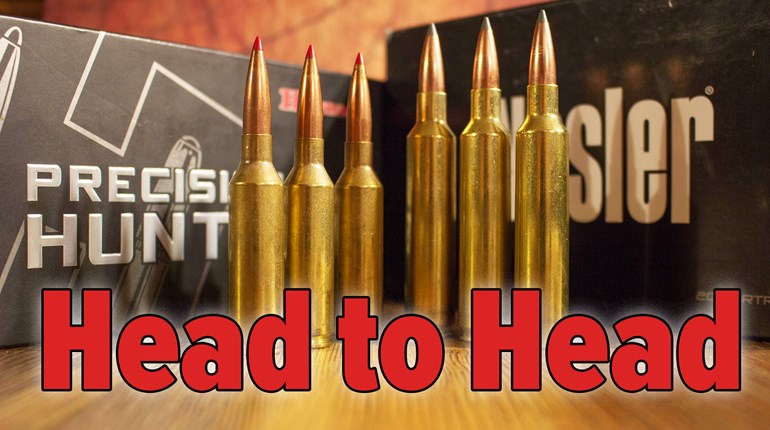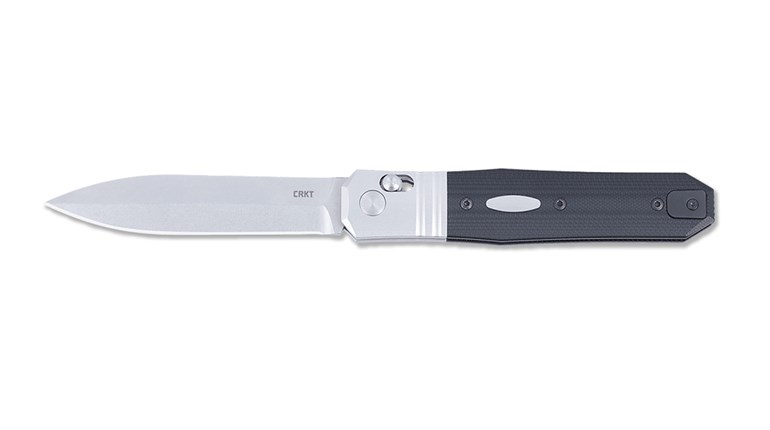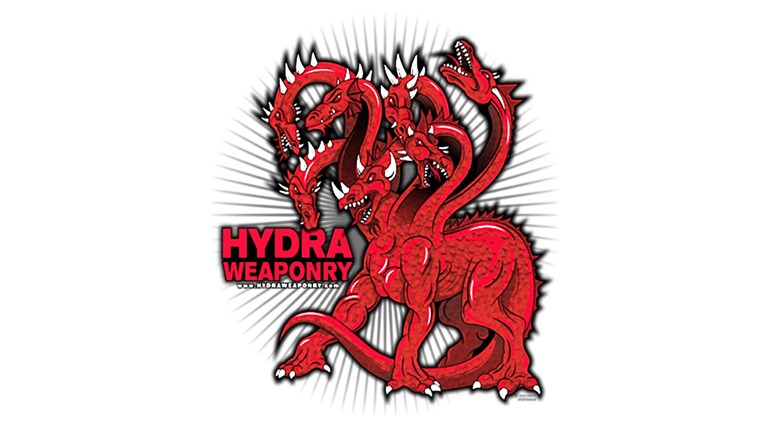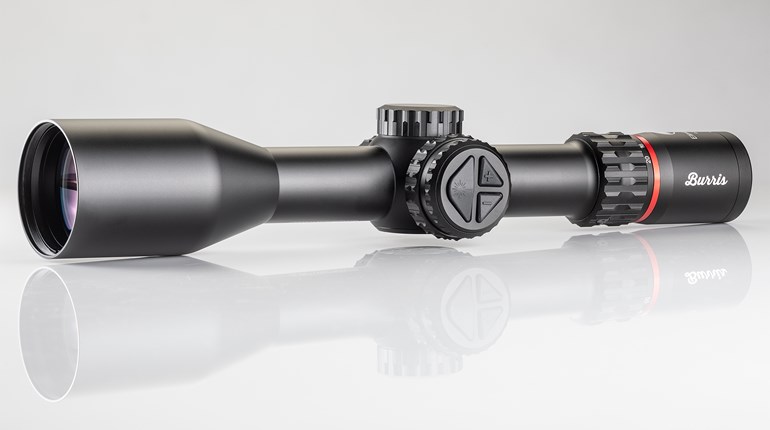
There are hundreds of self-defense pistol drills from which to choose, and there seems to be a constant search for the new best thing. Too often, those looking for training drills look for fun activities as opposed to drills that will help them improve their ability to win a fight. A good defensive-handgun drill will allow you to isolate different areas you’re not performing well; particularly things that are essential to defending yourself with a handgun.
Of course, the problem with the 15 million results you’ll get with a web search for self-defense handgun training drills is picking the one that will help you the most as opposed to the one that is the most fun to shoot. As I’ve said before, financially, most of us are somewhere between a single box of ammo and a full-time bodyguard when it comes to personal protection. Whatever drills we select should give us the best return for our investment. Because, let’s face it, the two things most of us are very short on are time and/or money.
I reached out to five noted instructors and simply asked them, “If you could only train on one defensive-handgun drill, what would it be?” Ideally, you’ll have recourse to add all of these drills to your toolbox. If not, pick the one you think will help you best prepare to save your life.
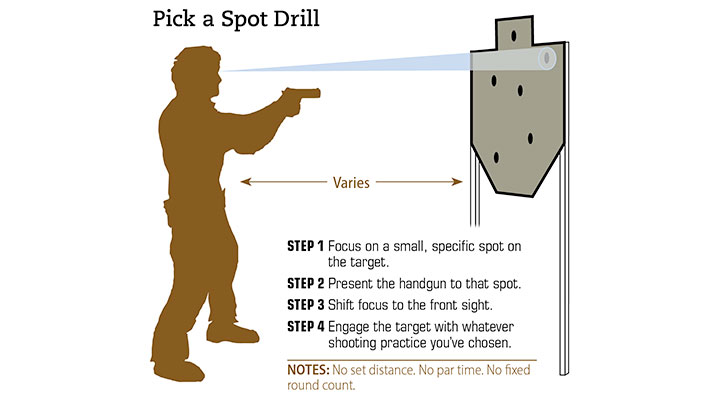
Pick a Spot
Il Ling New | Gunsite Academy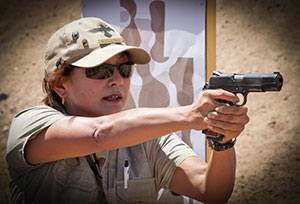 There are several reasons why Il Ling New is an outstanding firearm instructor, but the most prominent is she has an effective way of communicating information, regardless of the student. In other words, she can teach. Which, by the way, is the most critical skill an instructor can have. New has been an instructor at Gunsite Academy for many years. When I asked her for one drill, she said this is what she’s been working with, and it’s a carry-over from when she was doing a lot of clay shooting with her shotguns. She said, “It’s all about eye/brain/front sight focus.
There are several reasons why Il Ling New is an outstanding firearm instructor, but the most prominent is she has an effective way of communicating information, regardless of the student. In other words, she can teach. Which, by the way, is the most critical skill an instructor can have. New has been an instructor at Gunsite Academy for many years. When I asked her for one drill, she said this is what she’s been working with, and it’s a carry-over from when she was doing a lot of clay shooting with her shotguns. She said, “It’s all about eye/brain/front sight focus.
For live-fire, New suggests starting with your eyes closed or with a soft focus on the target. Next, quickly pick a small spot on the target—sometimes New will put small stickers on the target for this purpose—then, as you’re presenting the gun to that small spot, quickly focus-in on a smaller aiming point on the small spot. When the sights arrive, switch focus to the front sight and engage with whatever firing practice you’ve chosen.
According to New, “The two most important elements in this exercise are forcing your brain and eyes to process an unexpected target area and choose its aiming point, and efficiently doing all of this as quickly as possible. The overall objective is to train the brain and eyes to see in a way that’s more efficient and advantageous to defensive shooting.”
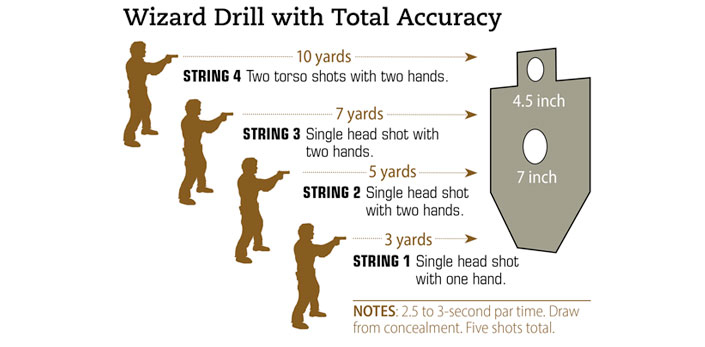
Wizard Drill with Total Accuracy
Ken Hackathorn | Aztec Training Services
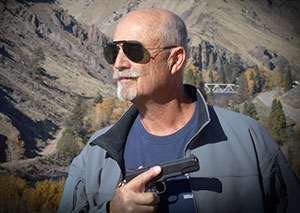 Ken Hackathorn served as a U.S. Army Special Forces small-arms instructor, a Gunsite instructor and an NRA police firearms instructor. He’s been training federal, state and local law enforcement agencies for more than 25 years. When I was still in uniform, Hackathorn was hired to provide designated-marksman training to my department. According to him, “People fight with handguns at ranges of 10 yards and less in the real world. You are not robbed, assaulted or mugged at 25 yards. The skill needed to make the handgun effective requires absolute accuracy. Shot placement is the only thing that works every time.”
Ken Hackathorn served as a U.S. Army Special Forces small-arms instructor, a Gunsite instructor and an NRA police firearms instructor. He’s been training federal, state and local law enforcement agencies for more than 25 years. When I was still in uniform, Hackathorn was hired to provide designated-marksman training to my department. According to him, “People fight with handguns at ranges of 10 yards and less in the real world. You are not robbed, assaulted or mugged at 25 yards. The skill needed to make the handgun effective requires absolute accuracy. Shot placement is the only thing that works every time.”You would expect a drill from Ken Hackathorn to be tough, and this one is. Using an IDPA or USPSA target, draw a 4.5-inch circle in the head box and a 7-inch circle in the chest area. For the first string, attempt a head shot at 3 yards with one hand. For the second string, try another head shot from 5 yards with both hands, and repeat at 7 yards for the third string. For the final string, draw and attempt two hits in the chest. Par time for each string is between 2.5 and 3 seconds, depending on shooter skill. Overtime shots mean you failed.
If all three shots fired at the head zone are in the circle, you get five points per hit. On the 10-yard string, if both shots are in the circle, you get 10 points. However, if any rounds are out of circles, your score for the drill is the value of the lowest scored hit. For example, you drop one point on the chest-zone target—meaning you have a four-point hit–your score is four points. Miss a head shot, and you score is zero. Hackathorn says to shoot cold “because the score from a cold drill is the only one that counts.”
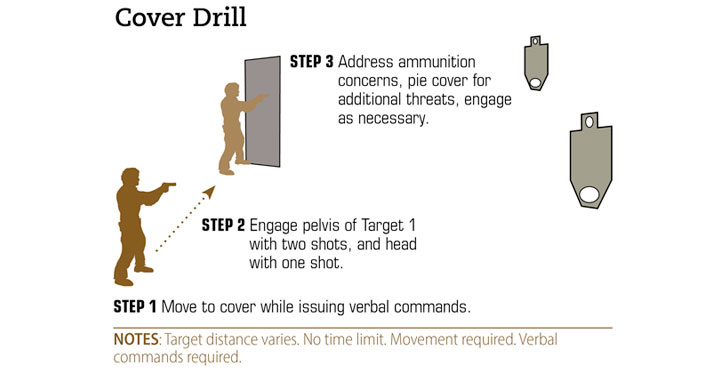
Cover Drill
Tiger McKee | Shootrite Firearms Academy
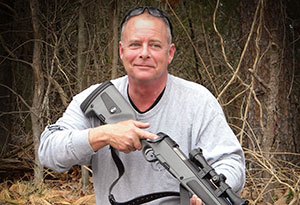 Shootrite Firearms Academy was founded by Tiger McKee, who trained with Jeff Cooper and has served as an adjunct instructor under Clint Smith at Thunder Ranch. McKee has assisted various agencies with the design of their own customized training programs and worked as an adjunct instructor for the FBI. When I asked McKee about a single drill, he said, “I like to reinforce the fundamentals; move, communicate, use cover, shoot as needed and think. McKee did not have a specific name for this drill, so I’ll call it the Cover Drill.
Shootrite Firearms Academy was founded by Tiger McKee, who trained with Jeff Cooper and has served as an adjunct instructor under Clint Smith at Thunder Ranch. McKee has assisted various agencies with the design of their own customized training programs and worked as an adjunct instructor for the FBI. When I asked McKee about a single drill, he said, “I like to reinforce the fundamentals; move, communicate, use cover, shoot as needed and think. McKee did not have a specific name for this drill, so I’ll call it the Cover Drill.It starts by moving to cover while issuing verbal commands and drawing your pistol. The threat isn’t complying, so you engage two zones on the target. McKee recommends the pelvis—to take away mobility—and a head shot for immediate incapacitation. With large and small target areas, this drill also tests marksmanship. After getting accurate hits the shooter scans from behind cover, conducts a tactical reload (if needed) and then “slices the pie” around cover to check for additional threats. Also, a target at a greater distance can be added to create an additional threat.
McKee imposes no time limit. He explains, “The shooter’s job is to perform at a speed that guarantees no mistakes, which is true for training, practicing and fighting. Don’t let external circumstances dictate your speed. Remember, the only thing you can control is what you do and the speed at which you do it. Speed—efficiency—comes with repetition.”
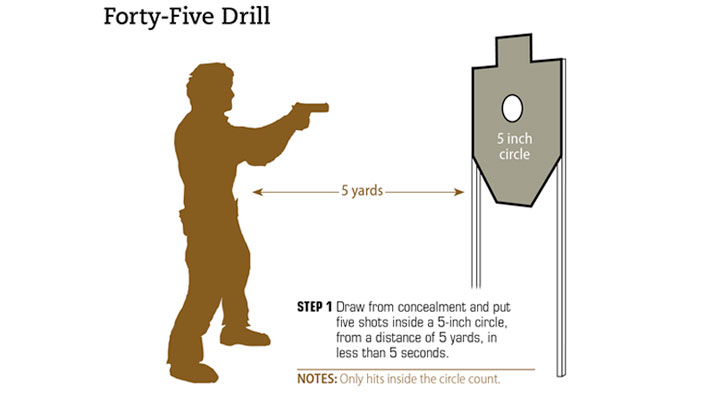
Forty-Five Drill
Richard Mann
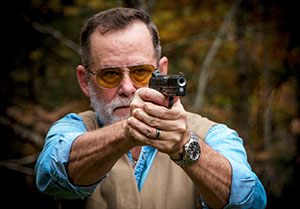 Though I spent much of my professional life training citizens, cops and soldiers to shoot, I’m not in the same league as the trainers here, but, bear with me. Years ago, I realized I needed a simple, standardized drill for testing handguns. What I came up with also seemed quite practical for personal protection-training, and I dubbed it the Forty-Five Drill because it’s made up of four elements of five.
Though I spent much of my professional life training citizens, cops and soldiers to shoot, I’m not in the same league as the trainers here, but, bear with me. Years ago, I realized I needed a simple, standardized drill for testing handguns. What I came up with also seemed quite practical for personal protection-training, and I dubbed it the Forty-Five Drill because it’s made up of four elements of five.With the handgun concealed, on signal attempt to put five shots in a 5-inch circle, at 5 yards, in less than 5 seconds. Essentially, it simulates an adrenalin dump, something that commonly happens in real-world gunfights. Each hit is worth four points. Your score is the total points minus the time. Fifteen is qualifying, 15.5 is Marksman, 16.5 Expert and 17.5 Master. If you can score 18 or more, you’re probably not human. Scoring aside, the goal is to get accurate hits, quickly.
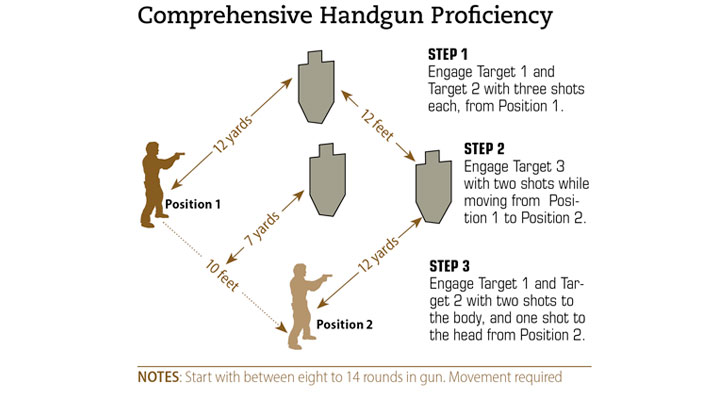
Comprehensive Handgun Proficiency
Bill Wilson | Wilson Combat
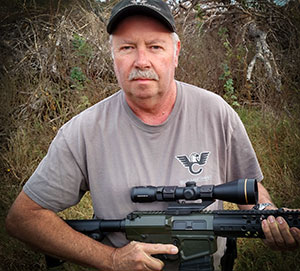 Few people have fired more handgun rounds than Bill Wilson. Not only is he one of the most talented 1911 pistolsmiths of all time, he had a long competitive career, as well. Though Wilson does not do a lot of formal training, he does some, including helping train the law enforcement officers near his Circle WC Ranch in Texas.
Few people have fired more handgun rounds than Bill Wilson. Not only is he one of the most talented 1911 pistolsmiths of all time, he had a long competitive career, as well. Though Wilson does not do a lot of formal training, he does some, including helping train the law enforcement officers near his Circle WC Ranch in Texas.“This drill is designed to test as many basic defensive-shooting skills as possible with a quick-to-administer single string-of-fire and minimal ammunition,” explained Wilson. it requires you to draw the handgun and deliver multiple shots, all while transitioning between targets. It also requires movement, target acquisition after movement and reloading.
Start the drill holstered and magazine loaded with eight to 13 rounds. At the signal, engage Target 1 with three shots and Target 2 with three shots. Then, move to Position 2 while engaging Target 3 with two shots while moving. Finally, from Position 2, engage Target 1 and Target 2 with two shots to the body and one shot to the head. When your gun hits slide lock conduct an emergency reload.
Wilson suggests using standard IDPA targets, scored raw time plus 1 second for every point down. Targets are scored +0 for A Zone, +1 for B Zone, +3 for C Zone. Misses add 3 seconds each. If you can complete the drill in less than 18 seconds (with penalties), Wilson says that rates as an Advanced shooter. Eighteen to 29 seconds would be considered Proficient, and more than 29 seconds, Novice.
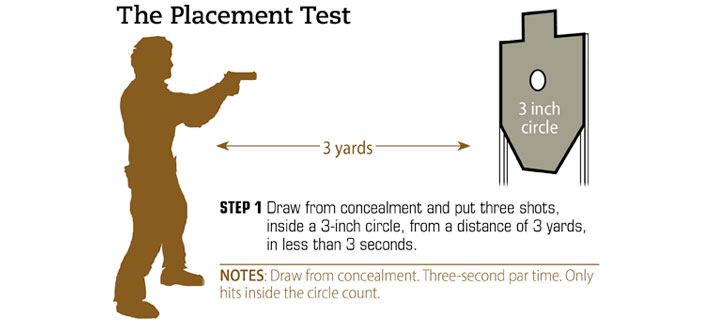
The Placement Test
SGM (ret.) John “Shrek” McPhee | S.O.B. Tactical
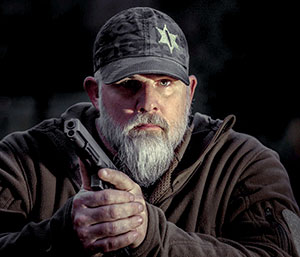 John McPhee served in U.S. Army Special Operations for more than 20 years. Better known by his call sign “Shrek,” McPhee created the S.O.B. (Sheriff of Baghdad) brand to provide his knowledge to civilians, law-enforcement officers and soldiers around the world. Through S.O.B. Tactical he offers hands-on training, but also very forward-thinking, online video coaching and home-defense plans, as well as dry- and live-fire instruction.
John McPhee served in U.S. Army Special Operations for more than 20 years. Better known by his call sign “Shrek,” McPhee created the S.O.B. (Sheriff of Baghdad) brand to provide his knowledge to civilians, law-enforcement officers and soldiers around the world. Through S.O.B. Tactical he offers hands-on training, but also very forward-thinking, online video coaching and home-defense plans, as well as dry- and live-fire instruction.I don’t know how much better one training drill can be than another, but I think I saved the most practical for last. When I called McPhee to ask him about his one drill, I prefaced my question with, “I know a lot of instructors think you cannot break defensive-handgun training down into one drill.” His reply kind of shocked me and at the same time validated my own thinking. McPhee said, “That’s one of the most common-sense questions I’ve had in a long time.” McPhee calls his one drill the “Placement Test,” and it’s part of a more comprehensive evaluation he performs with all his students.
It’s a very simple to conduct, but not so simple to pass, drill. From the holster, you attempt to put three shots into a 3-inch circle, at 3 yards, in 3 seconds. According to McPhee, if you can do this, you can shoot; meaning you have a solid grasp of the fundamentals. It’s also a very real-world because, as McPhee’s research into self-defense shootings has shown, in a generic way this drill closely replicates real-life self defense situations. The practicality of this drill—the common sense behind it—is that you should train the way you expect to fight.
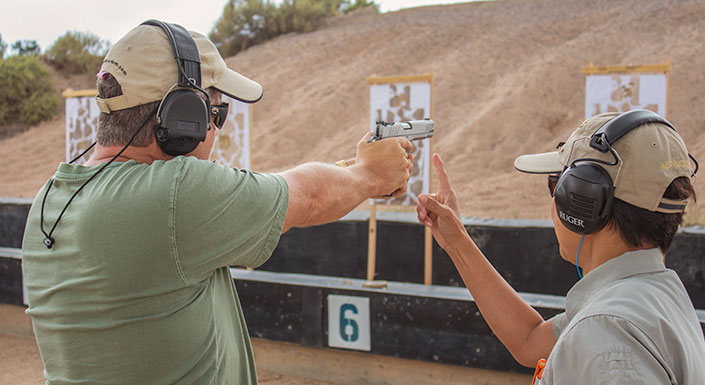
Training, Practice and Drills
Training in the manner you will fight, or at least the way you think will replicate how you may have to fight, is probably the single-best advice offered to anyone who carries a handgun for personal protection. This is especially true for those with limited resources. It goes back to the old adage, train to the test. Why would you train to do something you will very likely never have to do? As they also say, when under stress you will default to your training, not rise to the occasion.
Remember, training is what you do to learn something you do not know. Practice is something you do with the goal of improving your performance. Drills are tools we use for both. Regarding all three, for the defensive handgunner the question that should be asked is: Will the conduct of this or that drill help me be better prepared to use a handgun to save my life? That is, after all, the ultimate goal.





























